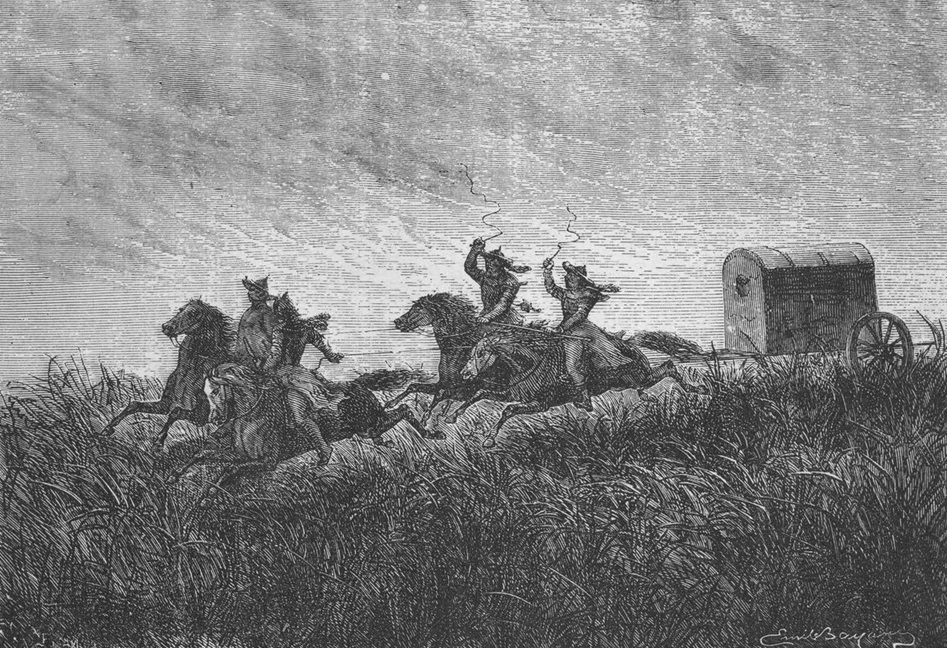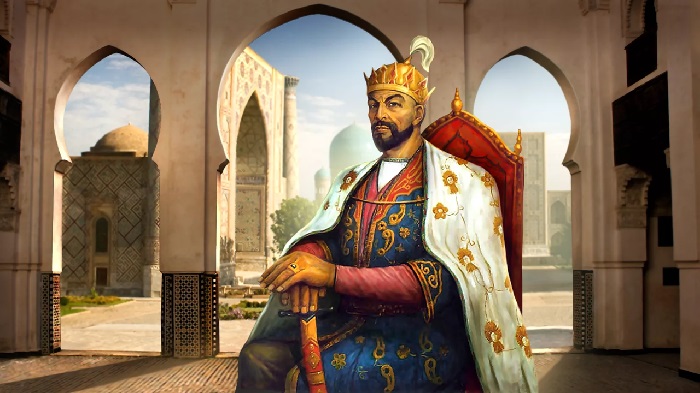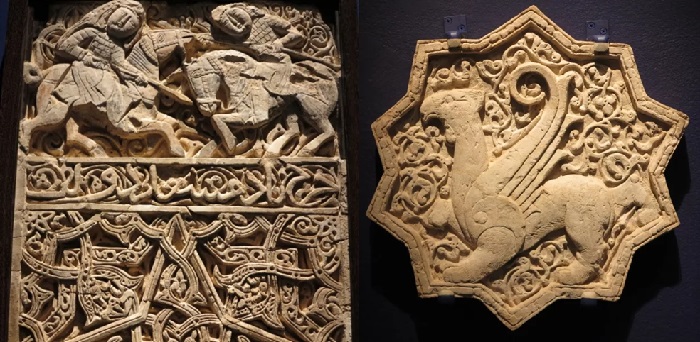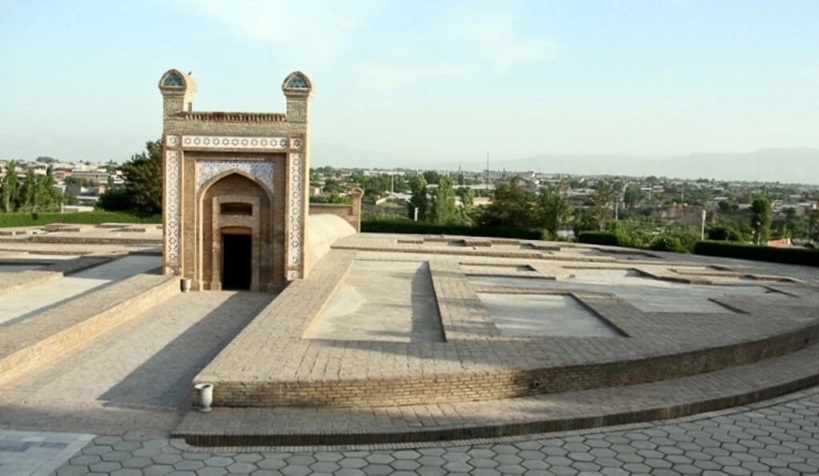nCa Analysis
Central Asia is the birthplace of at least 18 well-known Empires. Some of them influenced the world in many ways and their legacy endures. They remain hugely relevant today.
1. Achaemenid Empire (550-330 BCE) (Iran-based but with large territories of Central Asia in its orbit)
2. Greco-Bactrian Kingdom (250-125 BCE)
3. Kushan Empire (30-375 CE)
4. Hephthalite Empire (White Huns) (4th-6th centuries CE)
5. Göktürk Khaganate (552-744 CE)
6. Uyghur Khaganate (744-840 CE)
7. Khazar Khaganate (7th-10th centuries CE)
8. Samanid Empire (819-999 CE)
9. Ghaznavid Empire (977-1186 CE) – Founded by Sebüktigin, with its capital at Ghazni in modern Afghanistan
10. Karakhanid Khanate (840-1212 CE)
11. Seljuk Empire (1037-1194 CE) – Originated in the Oghuz Turkic groups from the Central Asian steppes
12. Khwarazmian Empire (1077-1231 CE)
13. Mongol Empire (13th-14th centuries CE)
14. Chagatai Khanate (1225-1680s CE)
15. Golden Horde (1242-1502 CE) – Mongol successor state in western Eurasia
16. Ilkhanate (1256-1335 CE) – Mongol successor state in southwest Asia
17. Timurid Empire (1370-1507 CE)
18. Shaybanid Dynasty (1501-1598 CE)
When studying these empires, we are bracketing Mongolia together with Central Asia because it was the largest empire encompassing almost all of the Eurasian landmass. We have put the Achaemenid Empire in this list because although it was Persian in origin, it held sway over large tracts of Central Asia including the very important centres of culture such as Margush and Bactria.
Each empire impacted Central Asia and the greater Eurasian landmass in its own way. We need to look at some of the important contributions made by these empires and at the same time we must keep in view the combined input of these empires as a living legacy of Central Asia to the world.
The Mongol Empire, founded by Genghis Khan was perhaps the most influential. It was also the largest empire in terms of the contiguous territory in Eurasia. It gave the world the early models of banking system, credit card, letter of credit, rented warehousing, religious tolerance, and lot more. It also gave the western trouser as we know it today.
The Mongols invented a postal system, known as the Yam system. It was a sort of medieval pony express with stations positioned at intervals of 20-30 miles. At each station, an “arrow messenger” would mount a fresh horse and ride to the next station at a full gallop. It was an express delivery system of letters and parcels from one end of the empire to the other. The succeeding empires maintained this system in one form or the other.
By the time of Seljuks, this system had evolved to such perfection and efficiency that fresh melons were delivered in ice-lined boxes in just four days from Merv to Baghdad, a distance close to 1800km.
The Timurid Empire, founded by Amir Timur, was like a fleeting moment in history but its impact was enormous. The influence of the Timurid period on culture, architecture and arts is noticeable. One of the important achievements was the unclogging of trade routes between China and Europe and making it safe for all.
The Achaemenid Empire, founded by Cyrus the Great, established the governance models for the vast multi-ethnic territories and sophisticated infrastructure. The correspondents in far-flung places dispatched their reports on real-time basis.
The Göktürk Khaganate, founded by Bumin Qaghan, is also known as the First Turkic Empire. It facilitated the spread of the Turkic people and their languages across Eurasia.
The Seljuk Empire, founded by Tughril and his brother Chaghri, transformed the religious and administrative landscape of the Asian part of the Eurasian landmass. It also gave the first university to the world with campuses at nine locations. It provided a real-world model of inclusive governance.
Seljuks practiced real diversity. Their prime minister was Iranian, their chief medical advisor was Jewish, their financial advisor was Indian, and their lead scientist was Christian.
One of the enduring legacies, common to these empires, is the Great Silk Road. It was not just a confluence of trade routes between Asia and Europe – it was also the vehicle for the exchange of knowledge and ideas.
Great strides were made in mathematics, physics, astronomy, chemistry, and medicine. The great inventors and scholars like al-Biruni and Ibn Sina (Avicenna) thrived during these empires. Avicenna’s “Canon of Medicine” was standard in European medical education into the 17th century. Farabi was the first to present a plausible version of the Theory of evolution. The luminaries like Omar Khayyam and Musa Khwarizmi flourished during the period of these empires.
Ulugh Beg, the grandson of Timur, established a modern observatory and produced a calendar with better accuracy than Copernicus. His Samarkand observatory produced star catalogues used by Western astronomers for centuries.
The irrigation systems and crop varieties introduced during the time of those empires are still in use today.
The world cuisine was enriched by introducing and popularizing yogurt and kumiz variations, the range of noodle dishes and meat and rice preparations.
The world of fashion and textiles still draws inspiration from the abstract and geometric designs created by those empires.
There was unprecedented flurry of cultural, technological, and biological exchange across Eurasia, creating connections that served as early foundations for our modern interconnected world.
The positive influence on the western world is no less important.
The Pax Mongolica provided a couple of centuries (13th and 14th centuries) of space for the pursuit of prosperity and stability in the west. Some crucial technologies such as paper making, printing techniques, gunpowder, and compass reached the west through these empires.
Integration of Europe into the broader Eurasian trade networks became possible.
The spread of the Black Death, despite the death and destruction it caused, led to the end of feudalism and ushered in labour reforms.
The administrative system and the structure of the civil bureaucracy introduced and continuously refined by these empires was the prototype of the modern civil services and administrative systems. Of particular importance is the accountability system for civil and police servants, introduced by Timur.
When we mention in passing the inventions of these empires in any area, we tend to overlook the sophistication that went into these inventions and the systemic capacity that helped enforce them.
For instance, take the decimal organization of armies in the units of 10, 100, 1000, 10000 etc. the system was first introduced methodically by the Mongols and continued to evolve during the period of all the succeeding empires in the region.
The Mongols implemented a highly structured decimal system called the “tumen” system, where:
• 10 soldiers = an arban
• 10 arbans (100 soldiers) = a jagun
• 10 jaguns (1,000 soldiers) = a mingghan
• 10 mingghans (10,000 soldiers) = a tumen
Earlier steppe peoples like the Xiongnu and Göktürks used similar systems, and Chinese armies had decimal organization dating back to the Warring States period. The Achaemenid Empire also used decimal units in their military.
Here is another example of sophistication that gets buried under hurried treatment:
As noted by LBV (Magazine Cultural Independente), Ulugh Beg and his assistants calculated that the tropical year (shorter than the sidereal year because it’s not the time it takes Earth to complete a full revolution around the Sun but the time between two successive passes of the Sun through the mean equinox, that is, from spring to spring or autumn to autumn) was 365 days, 5 hours, 49 minutes, and 15 seconds; today, with current technology, we know it lasts 365 days, 6 hours, 9 minutes, and 9.76 seconds, but at that time that mark improved Copernicus’s calculation by half a minute.
These empires served as crucial bridges between East and West, preserving ancient knowledge while adding their own innovations. Their role as civilizational intermediaries during Europe’s medieval period helped lay groundwork for the Renaissance and later scientific revolution.
Actually, the deeper we go, the more we find to praise the positive contribution of all of these empires. However, for now, we want to focus on the part of the legacy that can help strengthen modern peace and stability in the world.
Here are some of the things particularly relevant today:
Governance Models for Diversity: The Achaemenid and Mongol empires developed systems to govern diverse populations while respecting local customs and religions. Today, this approach could inspire better frameworks for multilateral institutions and multicultural societies. Their success at managing diversity through accommodation rather than forced assimilation offers templates for resolving ethnic tensions.
Cultural Interchange as Strength: These empires thrived by embracing diverse knowledge systems rather than rejecting foreign ideas. Modern international relations could benefit from recognizing cultural exchange as a strategic asset rather than a threat.
Communication and Infrastructure: The extensive road networks, postal systems, and protection of trade routes created unprecedented connectivity. Modern peace initiatives could focus on creating similar physical and digital infrastructure connecting divided regions. The Silk Road demonstrates how commerce creates mutual dependencies that discourage conflict.
Knowledge Exchange Systems: Centers of learning like Samarkand and Bukhara attracted scholars from all regions. Today’s universities and international research collaborations could model themselves after these historical knowledge hubs.
Diplomatic Innovations: The Mongols established sophisticated diplomatic practices including protections for envoys. These protocols evolved into aspects of modern international diplomacy.
Religious Tolerance as Policy: Many Central Asian empires practiced religious tolerance as a deliberate governance strategy. Their pragmatic approach to managing religious diversity offers templates for addressing religious tensions today.
Economic Insights: These empires understood that protected trade routes created prosperity and stability. Modern conflict resolution could emphasize creating shared economic interests across dividing lines.
Resource Management: Many developed sophisticated irrigation systems and resource management techniques. Their approaches to sustainable agriculture in challenging environments remain relevant for addressing climate challenges.
No doubts, most of what we have noted here is already in practice in one form or the other today. This said, there is also the need to acknowledge that we need to do better.
What we are trying to underline is that the overall contribution of these empires, just like any other empire, goes far beyond the battles they fought and the territories they conquered.
There is also the need to give the credit where it is due rather than reassigning it according to our own acquired perceptions.
The greatest lesson here may be how these empires often succeeded through pragmatism over ideology, valuing stability, prosperity, and functional administration over rigid adherence to particular worldviews—an approach that remains valuable for addressing today’s complex global challenges. /// nCa, 15 April 2025




